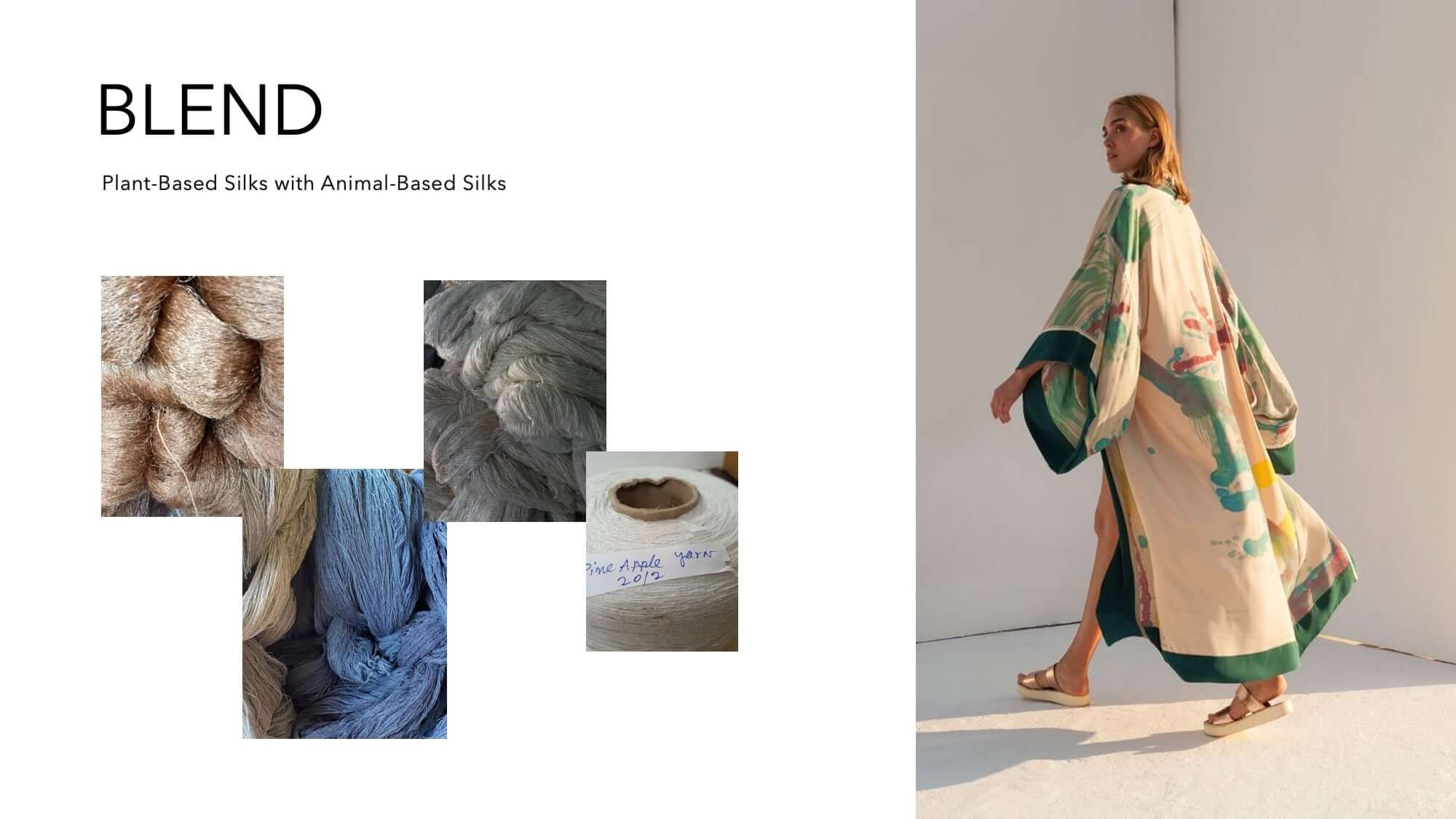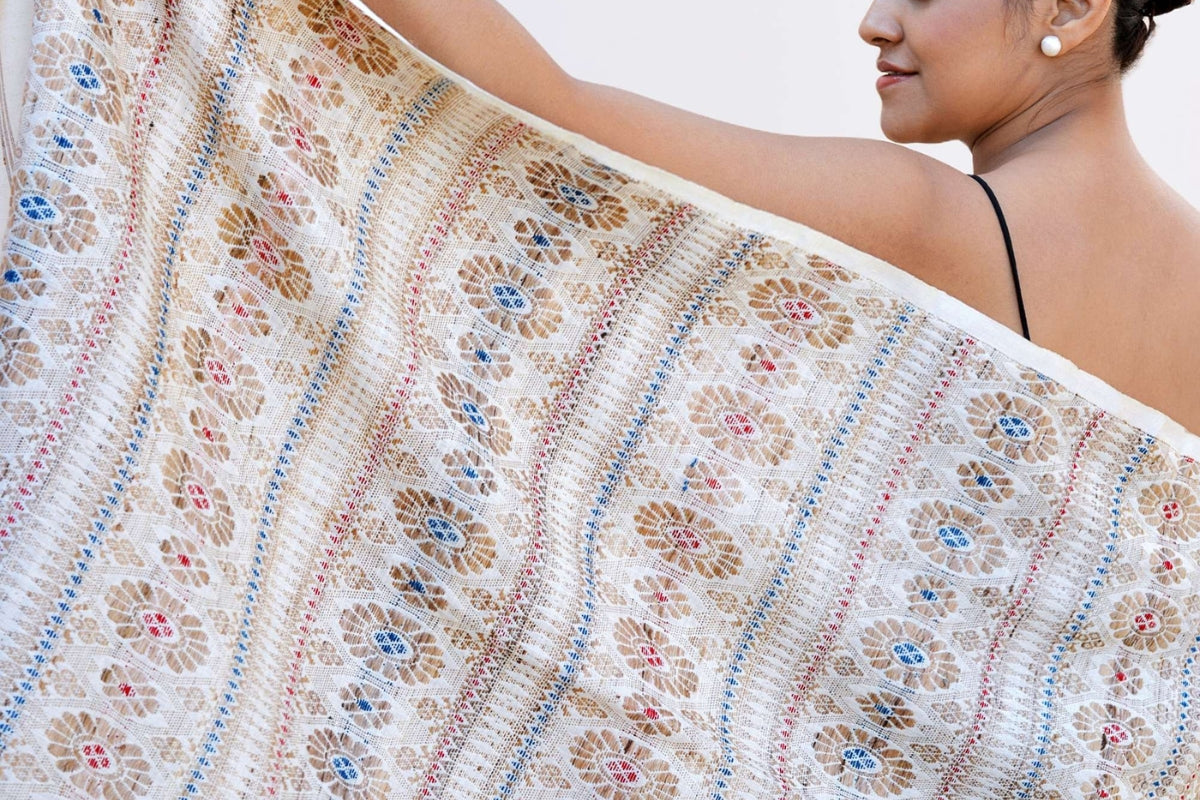BLEND: Community Level Material Driven Design
Securing external funding for individual projects isn't the norm for young companies. However, our venture recently clinched a research and product development grant from NEC Ignite (NE Council and IITG) for our latest venture, BLEND.
In BLEND, we embark on a unique journey by blending naturally sourced yarns like rose, lotus, bamboo, and banana with Eri and Mulberry. Our focus extends beyond mere amalgamation; we delve into experimenting with dyeing, printing, and weaving techniques to craft exquisite products. Our end goal? To create premium one-size fashion items, inspired by the sensorial experiences these blended fabrics offer.
What sets us apart is our collaborative approach with craft communities. Together, we traverse the intricate path of material-driven design, a method that forms the core of our project.

Material-Driven Design Unveiled
Material-driven design isn't just a catchy phrase; it's a methodical approach that governs our entire product development process. We employ a framework that guides us in the creation of material samples that push the boundaries of conventional textile norms.
Materials experience, a cornerstone of this method, takes center stage in our project. It is an open-ended design approach that places significant emphasis on the experiential properties of materials during the product development stage. Our exploration is structured across four layers of experience: sensorial, affective, performative, and interpretive.
Sensorial Pleasures in Fabric
In the sensorial layer, we tap into the tangible aspects of materials – the way they feel against the skin, their weight, and the overall comfort they provide. It's about creating fabrics that not only look good but also offer a delightful tactile experience.

Affective Connection with Textiles
Moving to the affective layer, we seek to evoke emotions through our creations. Colors, patterns, and textures play a pivotal role in establishing a profound connection between the wearer and the product. It's more than just clothing; it's a form of expression.
Performative Textile
The performative layer addresses how users interact with the product from which actions and performances ensure. A textile could be felt, played with, cozied with or wrapped around oneself.

Interpreting the Fabric Language
Lastly, the interpretive layer delves into the deeper meanings associated with the materials. It's about understanding the cultural and historical significance woven into the fabric – a journey that adds layers of meaning to our designs.

Community-Level Innovation for Systemic Challenges
Our innovative journey doesn't stop with fashion. We believe in the power of community-driven innovation to tackle systemic challenges. In regions like North East India, where climate change, deforestation, and dwindling raw materials due to fewer silk worms pose significant threats, community-level innovation becomes a beacon of hope.
Empowering these communities to explore sustainable practices, develop eco-friendly materials, and contribute to a circular economy is our vision. Through collaborative efforts, we strive to create solutions that not only benefit our immediate projects but also ripple out to address broader environmental concerns.
In conclusion, our foray into material-driven design, backed by external funding and community collaboration, propels us towards a future where innovation becomes a driving force for positive change. BLEND is not just a project; it's a testament to the potential of combining creativity, technology, and community spirit to create a sustainable and stylish future.
BIBLIOGRAPHY
Giaccardi, E., & Karana, E. (2015, April). Foundations of materials experience: An approach for HCI. In Proceedings of the 33rd Annual ACM Conference on Human Factors in Computing Systems (pp. 2447-2456).
Karana, E., Barati, B., Rognoli, V., & Zeeuw Van Der Laan, A. (2015). Material driven design (MDD): A method to design for material experiences. International journal of design, 9(2), 35-54.







